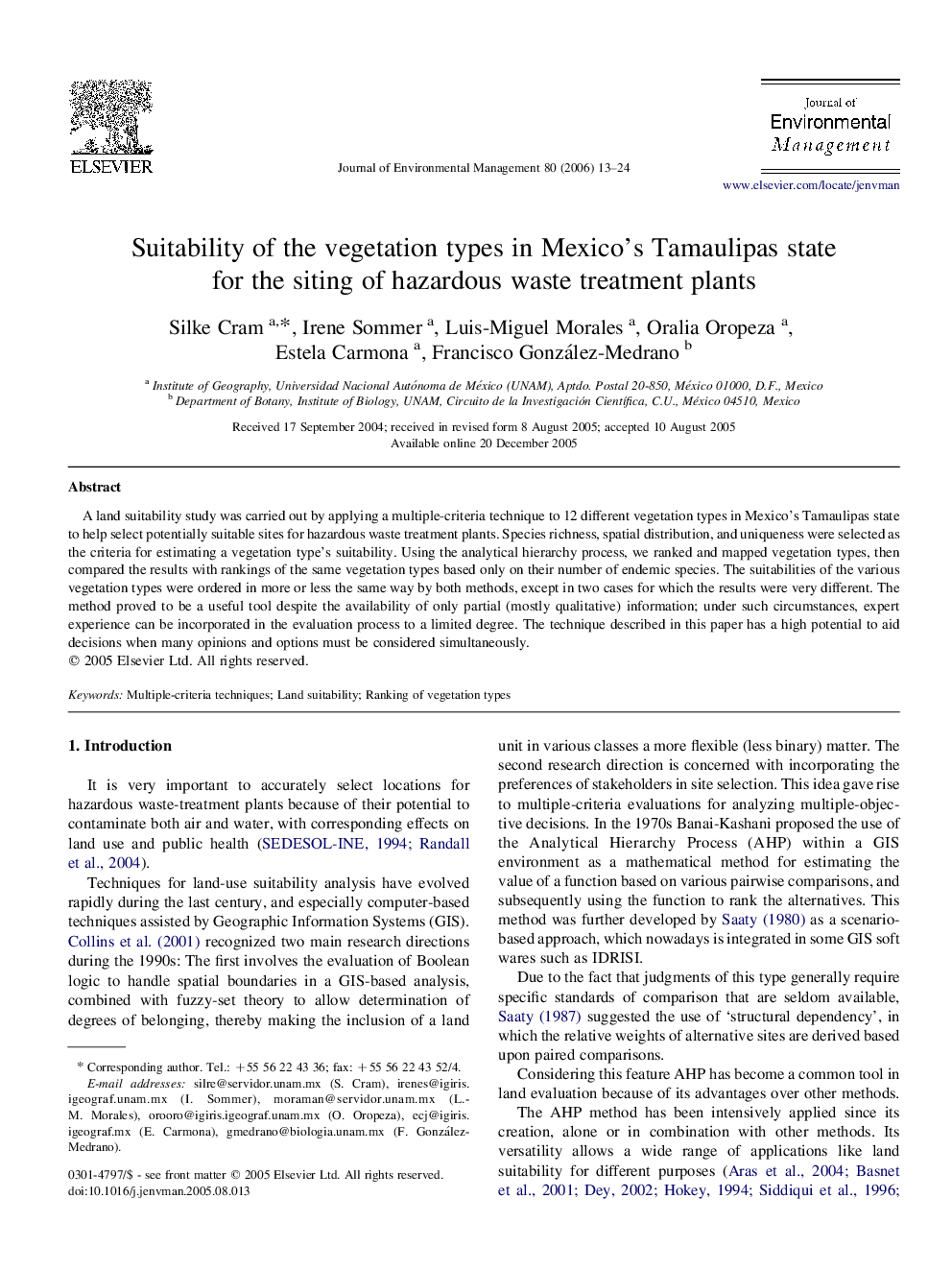| Article ID | Journal | Published Year | Pages | File Type |
|---|---|---|---|---|
| 1058931 | Journal of Environmental Management | 2006 | 12 Pages |
A land suitability study was carried out by applying a multiple-criteria technique to 12 different vegetation types in Mexico's Tamaulipas state to help select potentially suitable sites for hazardous waste treatment plants. Species richness, spatial distribution, and uniqueness were selected as the criteria for estimating a vegetation type's suitability. Using the analytical hierarchy process, we ranked and mapped vegetation types, then compared the results with rankings of the same vegetation types based only on their number of endemic species. The suitabilities of the various vegetation types were ordered in more or less the same way by both methods, except in two cases for which the results were very different. The method proved to be a useful tool despite the availability of only partial (mostly qualitative) information; under such circumstances, expert experience can be incorporated in the evaluation process to a limited degree. The technique described in this paper has a high potential to aid decisions when many opinions and options must be considered simultaneously.
